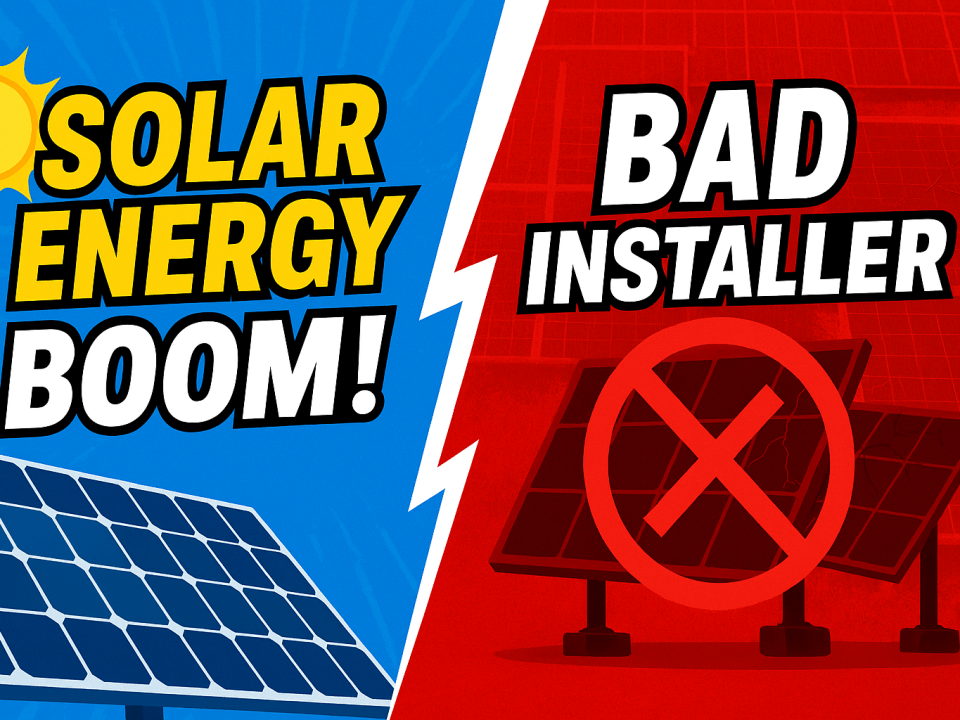
How Long Do Solar Panels Last?
April 16, 2025
Community Solar Programs: What Are They?
September 1, 2025Introduction
Sunlight is the lifeblood of every solar energy system. Without consistent access to direct sunlight, solar panels cannot produce electricity at their full potential. What surprises many homeowners is how even a small patch of shade can drastically cut down the amount of power their panels generate. A shadow from a tree branch or even a utility wire may seem insignificant, but the impact on performance can be dramatic.
For residents in St. Charles, Illinois, this makes proper design and installation crucial. Sunrise Solar Solutions understands the unique challenges of the Midwest, where seasonal growth from trees and shifting sun angles can create unexpected shade patterns. With the right evaluation and planning, the performance of your solar panels can be protected from these hidden risks.
How Shade Impacts Electrical Output
Solar panels work by converting sunlight into usable electricity. They are made up of many solar cells that are typically connected in series. When sunlight hits each cell evenly the flow of electricity remains steady. However when even one part of a panel is shaded the entire panel can be affected.
Think of it like water flowing through a pipe. If one section of the pipe becomes clogged the flow is restricted no matter how strong the water pressure is elsewhere. In the same way a shaded solar cell acts like a weak link limiting the current through all the connected cells.
The losses can be far greater than most people expect. Studies have shown that shading as little as one thirty sixth of a panel can reduce total power output by as much as seventy five percent. That is why a small shadow can lead to a big performance problem.
Internal Design and Role of Bypass Diodes
Modern solar panels are not without defenses against shading. Each panel is divided into segments that are supported by bypass diodes. These diodes act like safety valves. When one section of a panel becomes shaded the diode reroutes the current around it. This prevents the shaded portion from dragging down the entire panel and also protects against overheating which could otherwise create hot spots.
While this design feature helps to reduce losses it does not erase them completely. The shaded section of the panel still produces no energy and the bypassed electricity means the panel overall delivers less power. The effect is most noticeable when shading covers an entire section of cells within a panel. In these cases the bypass diode activates but the remaining sections must carry the load alone.
Shading in Large Arrays System Level Impacts
The impact of shade grows larger when panels are installed in series strings as is common in traditional solar systems. In this setup the performance of each panel is linked together. If a single panel is affected by shade the output of the entire string can be limited.
This design means that one shaded panel on a rooftop can reduce energy generation across many panels at once. Homeowners often notice sudden and steep drops in system performance that seem out of proportion to the small shadow on the roof.
The good news is that careful planning and modern solutions can reduce this risk. Professional site evaluations consider potential shading throughout the year and adjust system design accordingly. Advanced technologies such as microinverters or power optimizers can also help minimize the effects of shade at the system level ensuring that one shaded panel does not compromise the whole array.
Sources of Shade and Their Effects
Shade can come from many different sources and often changes throughout the day or across seasons. Trees are among the most common culprits. As branches grow and leaves fill in during the summer they can cast shadows that were not present in winter. Buildings are another factor especially in neighborhoods where homes are close together. Even small structures like chimneys or antennas can create narrow but damaging shadows.
Utility wires and poles are often overlooked yet the thin lines of shade they cast can cut into panel efficiency more than expected. Debris such as leaves or bird droppings can also block sunlight in small but critical spots. Even these seemingly minor obstructions matter because solar cells are sensitive to uniform light exposure.
For homeowners in St. Charles, Illinois where mature trees and older utility lines are common a thorough site evaluation is essential. Sunrise Solar Solutions provides this assessment to identify both current and future risks of shading before panels are installed.
Partial vs Complete Shade

Not all shade has the same impact. Partial shade allows some light to reach unblocked cells so electricity is still produced but at a reduced level. The effect is a drop in efficiency rather than a full loss.
Complete shade on the other hand is far more damaging. When an entire panel or section is fully blocked it produces little to no energy. Over time repeated periods of full shading can create temperature differences across the system. These imbalances place stress on the materials of the panel and can shorten its lifespan.
Understanding the difference between partial and complete shade is important when designing a solar system. With proper planning panels can be placed to avoid these risks and to ensure consistent performance throughout the year.
Why Shade Management Matters for Long Term Performance
Shading is not just a short term concern for energy output. Over time it can create lasting effects on the health of the system. When one part of a panel is shaded while another is exposed to full sunlight the difference in temperature can cause stress on the materials. This repeated imbalance may lead to hot spots cracks or early wear on the panel.
From a financial perspective shading reduces the return on investment of a solar system. Homeowners depend on steady energy production to lower utility bills and offset installation costs. If shading is not managed properly the payback period becomes longer and the overall savings decrease.
By addressing shading issues early you can protect both the efficiency and the durability of your panels ensuring your system performs at its best for decades.
How Sunrise Solar Solutions Minimizes Shade Losses
Sunrise Solar Solutions takes shading seriously because it is one of the biggest threats to solar efficiency. Every project begins with a professional site evaluation that looks at shade patterns across different seasons and times of day. This process ensures that panels are placed in the best possible locations for maximum sunlight.
The company also uses advanced technologies like microinverters and power optimizers that allow each panel to perform independently. This means one shaded panel will not bring down the output of the entire system. In addition Sunrise Solar Solutions offers ongoing monitoring and maintenance so that unexpected sources of shade such as new tree growth or debris are quickly identified and managed.
For homeowners in St Charles and throughout the Chicagoland area choosing a local expert ensures that shading concerns are properly addressed. With Sunrise Solar Solutions you can be confident that your investment in solar energy will deliver reliable performance year after year.
Conclusion
Shade is one of the most underestimated challenges in solar energy. Even a small shadow can drastically reduce the power output of a panel sometimes by as much as seventy five percent. While bypass diodes help reduce losses they cannot completely eliminate them. In larger systems a single shaded panel can affect the performance of an entire string.
Common shade sources include trees, buildings, utility wires and seasonal debris. Both partial and complete shading create efficiency losses and long term wear on panel materials. This is why careful site evaluation and modern system design are essential.
The most important takeaway is that shading issues can be managed with the right planning. By working with experienced professionals you can make sure your solar panels produce consistent energy for decades.
Know If Solar Works For You!
Are you ready to unlock the full power of the sun without letting shade steal your savings? Contact Sunrise Solar Solutions in St. Charles, Illinois for a free site evaluation. Our team designs systems built to perform in real world conditions ensuring that your solar investment delivers reliable energy year after year.





